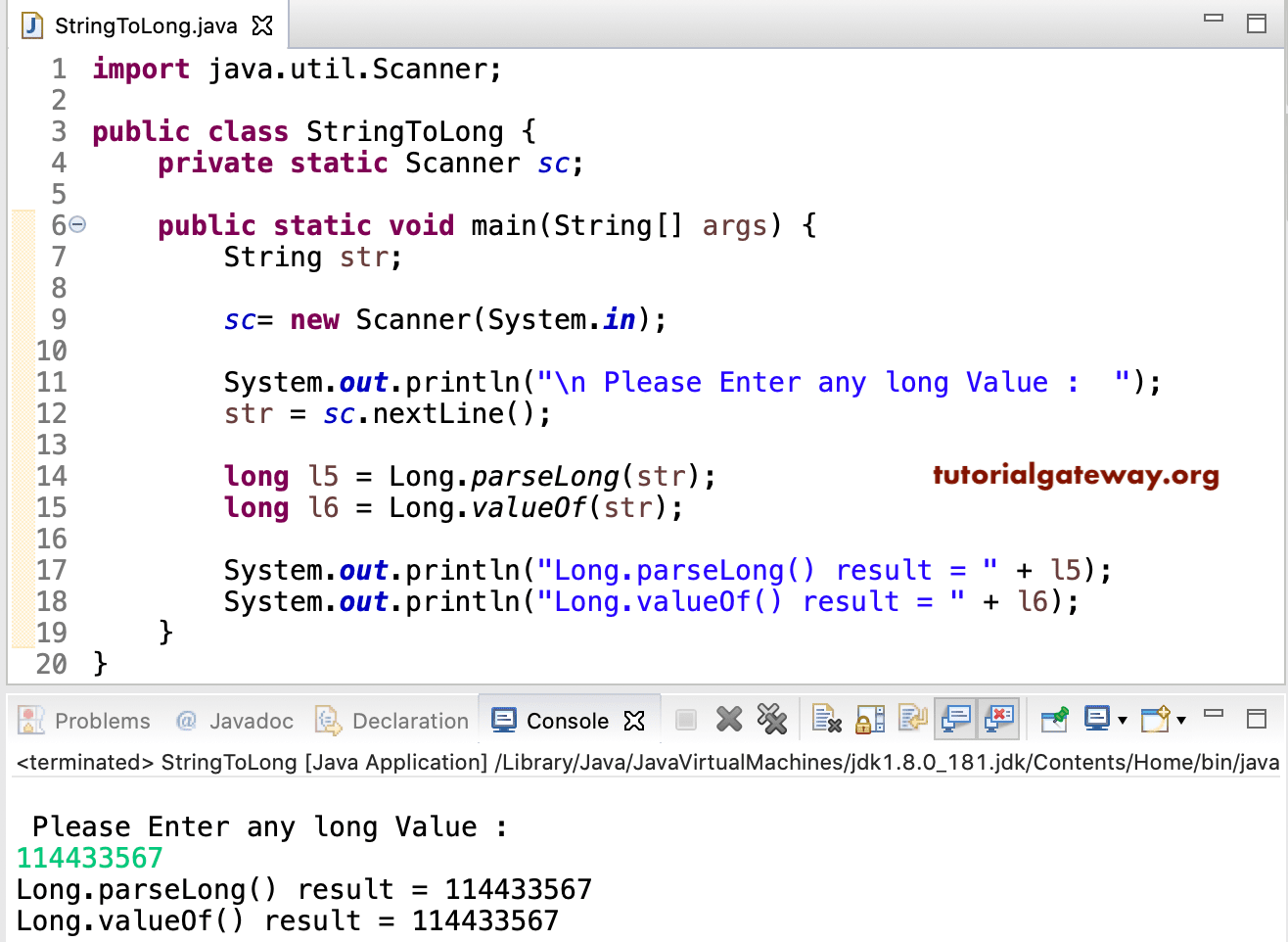
Option 1 – Continue using Integer.Classes that has a natural sort order (a class Number, as an example) should implement the Comparable interface, whilst classes that has no natural sort order (a class Chair, as an example) should be provided with a Comparator (or an anonymous Comparator class). The radix parameter is used to specify which numeral system to be used, for example, a radix of 16 (hexadecimal) indicates that the number in the string should be parsed from a hexadecimal number to a decimal number. If I am not wrong String c '110' int decimalValue Integer.parseInt (c, 2) (decimalValue) then this prints 6 which is String (having binary) to decimal. JavaScript parseInt () Method is used to accept the string and radix parameter and convert it into an integer. EJP I think we can use it for decimal too. The following examples assume you want the result to be 0.

Let’s look at some options to harden our String to int conversion logic. Integer.parseInt () converts to binary, not decimal. Int(String) returns an optional as well, so it kind of depends how you want to handle that part of it. Int sample6 = Integer.parseInt(" 0 xx") //throws Unchecked NumberFormatExceptionĪs we can see, Integer.parseInt though useful, can be used directly only in very limited use cases where it is guaranteed that the incoming String will be an integer. parseInt below throws an unchecked NumberFormatException because " 0 xx" is not a valid integer IntStream.of(sample1, sample2, sample3, sample4, sample5).forEach(System.out::println) Int sample5 = Integer.parseInt("-0") // returns 0 Java Integer parseInt (String s, int radix) Method This method parses the String argument as a signed decimal integer object in the specified radix by the second argument.

Int sample4 = Integer.parseInt("-4") // returns -4 Int sample3 = Integer.parseInt("+4") // returns 4 Is there a way around this somehow for those cases where performance is an. In java, Integer.parseInt ('abc') will throw an exception, and in cases where this may happen a lot performance will suffer. (For example, a radix of 10 converts from a decimal number, 8 converts from octal, 16 from hexadecimal, and so on. C has Int.TryParse: Int32.TryParse Method (String, Int32) The great thing with this method is that it doesnt throw an exception for bad data. If not NaN, the return value will be the integer that is the first argument taken as a number in the specified radix. Int sample2 = Integer.parseInt("47") // returns 47 The parseInt function converts its first argument to a string, parses that string, then returns an integer or NaN. Int sample1 = Integer.parseInt("0") // returns 0 The way Java casts a double to an int is done by removing. A double or a float datatype can hold rational numbers. So, trying to parse 0.3 to a int is nonsense. * Java method demonstrating simple use of parseInt to convert String to integer String s '0.01' double d Double.parseDouble (s) int i (int) d The reason for the exception is that an integer does not hold rational numbers ( basically fractions). Thanks to the standard Java Class Library, we have parseInt and parseUnsignedInt methods on the Integer class that parse the string argument as a signed or unsigned decimal integer. This article will explore approaches to convert a given Java String object to an integer value (primitive type int). It is a daily job for programmers to convert some data type to another.


 0 kommentar(er)
0 kommentar(er)
